Utah has the third-largest percentage of public versus private land of all the U.S. states, trailing only Alaska and Nevada. In addition, much of this public land is actively used for recreation. All of this public land helps to make Utah a beautiful and exciting place to visit, but it has also attracted certain kinds of illegal activity. This state is not only a magnet for huge numbers of tourists each year, but also a magnet for illegal marijuana growers.
According to a press release from the office of U.S. Sen. Orrin Hatch (R-UT), federal drug enforcement agents have seized hundreds of thousands of illegally grown marijuana plants on Utah public land in recent years, particularly in southern Utah. Hatch is co-sponsoring a bill that would increase the penalties for cultivating marijuana on public land and would also provide funds to help address the environmental impact of illegal marijuana grows.
Environmental Damage, Public Safety Are Major Concerns
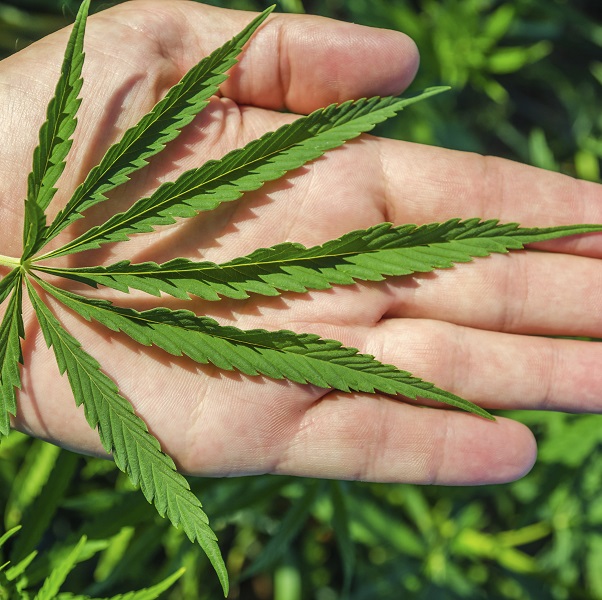 Large-scale marijuana grows use and pollute valuable water resources in addition to leading to the clear-cutting of trees. Pesticides used to protect marijuana plants can harm an area’s natural ecology, and clear-cutting can cause erosion and even landslides.
Large-scale marijuana grows use and pollute valuable water resources in addition to leading to the clear-cutting of trees. Pesticides used to protect marijuana plants can harm an area’s natural ecology, and clear-cutting can cause erosion and even landslides.
Frequently, growers with ties to international drug traffickers will take advantage of remote wilderness areas that have been set aside for public preservation. Public lands offer remoteness and minimal law enforcement presence, making it possible for growers to cultivate marijuana on a scale that would be difficult to achieve on private lands.
Many people have public safety concerns in addition to environmental concerns when it comes to illegal marijuana cultivation. While reports of encounters between members of the public and marijuana growers are rare, they do happen, as in 2010 when two hikers were held at gunpoint before being rescued.
Impact Of Marijuana Legalization
Recent developments in and around Utah have some people concerned that the amount of Utah land being used to grow marijuana could increase despite legislative efforts. The neighboring state of Colorado legalized recreational marijuana in 2014, but it is unclear whether this has helped to increase or decrease the amount of illegally grown marijuana that is sold in the state.
Utah itself was recently considering a bill that would legalize edible medical marijuana for patients with certain illnesses. A Drug Enforcement Agency (DEA) official made headlines in March 2015 with his testimony before a Utah Senate panel. The agent warned that marijuana grow sites would increase if medical marijuana were legalized, and that the environmental consequences would include, among other things, stoned rabbits and other wildlife. Ultimately, the bill failed to pass the Senate by one vote and its sponsor has vowed to reintroduce the legislation.
Convictions For Marijuana Possession On Public Lands
In Utah, public land and marijuana also intersect in a different way. The state leads the nation in the number of people convicted for cannabis possession on public lands; in fact, it is responsible for about one-third of all such convictions nationwide.
Cannabis users are attracted to public lands in Utah for the same reason that marijuana growers use the land. There is very little law enforcement presence in remote areas of wilderness, so people believe that they are unlikely to get caught.
Find Out The Top 3 Reasons Marijuana Should Be Banned
A new study has investigated the widespread use of cell phones and smartphones in the U.S., leading many experts to suggest taking some time out of each day to disconnect in order to protect against the potentially addictive effects of technology use. The findings may be a little basic—focusing about as much on connection problems and telemarketing as potential markers of addiction—but they still serves as a wakeup call to the impact cell phones may be having on both American youth and adults.
So does the risk of Internet and technology addiction mean you might need to disconnect? The evidence seems to say so, but precisely defining these addictions is harder than it might seem.
Cell Phone Use And Time Staring At Screens
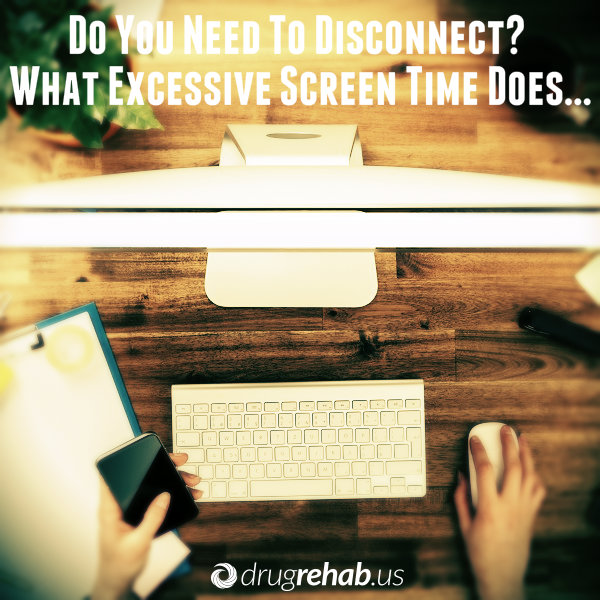 The most basic finding from the research is that 90 percent of American adults have a cell phone, and 58 percent have a smartphone. In addition to many more mundane findings, the results strongly hint at a problem with excessive smartphone use.
The most basic finding from the research is that 90 percent of American adults have a cell phone, and 58 percent have a smartphone. In addition to many more mundane findings, the results strongly hint at a problem with excessive smartphone use.
In particular, the survey revealed that 44 percent of cell phone owners have slept with their phones next to their beds so that they wouldn’t miss calls, texts or other updates through the night. Over two-thirds of cell phone owners check for messages or updates even if their phones don’t ring, sound a tone or vibrate, and about three in 10 say they couldn’t imagine living without their phones.
Americans spend an average of seven hours and 24 minutes staring at screens each day, and for 8- to 10-year-old children, the average is eight hours. Teens spend the most time looking at screens on average, reaching a huge 11 hours per day.
An Overstimulated State
The increasing use of cell phones has many direct impacts, relating to both being connected and spending so much time looking at screens. Constant checking of your cell phone can make it harder to fall asleep, keeping your brain in an anxious, overstimulated state. This same effect occurs when messages you send aren’t responded to quickly—you find yourself checking your phone and possibly worrying that your message didn’t come across as intended. Research suggests that staring at screens makes people less creative and less productive.
There are also more obvious consequences of excessive cell phone use, in particular spending less time socializing with people in real life or engaging in hobbies. Even when people do socialize, it’s becoming increasingly common for a group of people to sit staring at their screens while ignoring the people around them.
Technology And Internet Use As Addictions
Internet addiction has yet to be officially acknowledged as a condition by the Diagnostic and Statistical Manual of Mental Disorders (the DSM), but most experts—who are seeing increasing numbers of people seeking help for technology and Internet addictions—accept its existence. It might seem counterintuitive that an addiction can persist without a substance, but addiction really comes down to the effect something has on the brain, and other behavioral addictions such as gambling addiction have gained widespread acceptance because of these addiction-like effects on the brain.
Looking at the definition of addiction in a broad sense also reveals the striking similarities with excessive Internet and technology use. Addictions of any kind are characterized by an inability to control how often you engage in an activity, feeling urges or cravings to engage in the activity and continuing with it despite negative consequences.
Internet and technology addicts run into problems with work and school when they’re unable to stop surfing the Internet or using their devices. They may also jeopardize relationships and suffer withdrawal-like symptoms when they’re disconnected.
The similarities are hard to deny, but there are still some problems with classifying technology or Internet use as an addiction. First, the Internet (and technology used to access it) often serves as a method to access other addictive media, like pornography, online casinos or video games, so it’s hard to pin down whether somebody is addicted to the Internet or something else that’s accessed online. Additionally, it’s difficult to define just how much use is too much.
These problems are more technical than anything, however. Real-world examples of people ruining their lives over excessive Internet or technology use and being unable to stop speak volumes about the problem. Clearly, something unusual is going on.
Disconnecting To Protect Against The Risk
Internet and technology addiction are almost certainly real conditions, and we need to take the risks seriously because the vast majority of Americans now use Internet-equipped devices. Although full-blown technology or Internet addiction won’t affect most of us (like most addictions won’t), taking steps to guard against overuse is a prudent move. Many experts recommend simply disconnecting for an hour each day, preferably before bed, but doing so any time throughout the day is beneficial. There are apps designed to help you limit the time you spend on your smartphone.
There are many similar approaches available that are suitable for less severe cases, and many more professional counseling or rehab programs if you’re struggling with a more serious addiction. As we continue to spend more and more time online, thinking about the extent of our use and its consequences is becoming increasingly important.
Read Our Other Intriguing Posts On Internet Addiction
Prior to 2013, doctors in the U.S. diagnosed serious gambling problems under the heading of a condition called pathological gambling. However, in May of that year, the American Psychiatric Association eliminated the pathological gambling diagnosis and replaced it with a new, modified diagnosis called gambling disorder.
In a study published in 2014 in the journal Psychology of Addictive Behaviors, a team of American researchers compared the accuracy of the definition for pathological gambling to the accuracy of the definition for gambling disorder. These researchers concluded that the definition for the newer diagnosis has retained a high degree of accuracy in properly identifying affected individuals.
Pathological Gambling
The American Psychiatric Association (APA) included pathological gambling with a larger group of conditions called “impulse control disorders not elsewhere classified.” Other illnesses found in this category included pyromania, an anger control-related condition called intermittent explosive disorder, and kleptomania.
Pathological Gambling Symptoms
Doctors diagnosing pathological gambling looked for the presence of a minimum of five out of 10 potential symptoms. These symptoms included:
 fixation with gambling while not actively involved in gambling,
fixation with gambling while not actively involved in gambling,- demonstrated inability to place limits on gambling participation,
- compulsion to engage in increasingly risky gambling situations, a
- reliance on gambling to cope with or avoid painful emotions or personal problems,
- returning to gambling rapidly after incurring substantial losses,
- concealing the extent of gambling involvement from others,
- relying on other people’s resources for gambling participation,
- gambling-related exposure to serious harm in personal or social relationships, and
- the onset of mental/psychological withdrawal when gambling participation stops or declines
The pathological gambling definition also included funding of gambling through illegal means as a potential symptom.
Gambling Disorder
In 2013, the APA simultaneously eliminated the pathological gambling diagnosis and placed the gambling disorder diagnosis in a new category of conditions called addictive disorders. These disorders are behavioral addictions that stem from problematic involvement in certain pleasurable, everyday activities rather than from the repeated, excessive use of drugs or alcohol. Gambling disorder is the only illness the APA has added to the addictive disorders category.
The definition for this condition largely resembles the previously used definition for pathological gambling. However, the American Psychiatric Association eliminated funding gambling through illegal means from the list of symptoms. In addition, the organization reduced the lower limit for diagnosing gambling disorder to four out of 10 symptoms, compared to the five out 11 symptoms limit used for diagnosing pathological gambling.
Has The Change Affected Accuracy?
In the study published in Psychology of Addictive Behaviors, researchers from the New York State Psychiatric Institute, the National Institutes of Health, and the University of Connecticut used information from a large-scale federal project called the National Epidemiologic Survey of Alcohol and Related Disorders (NESARC) to compare the accuracy of the symptom set used to define pathological gambling to the accuracy of the symptom set used to define gambling disorder. A total of 43,093 people were involved in this comparison. These individuals came from demographic backgrounds reflective of the national population. The researchers analyzed the gambling problems in this group as a whole and in each major demographic subgroup.
After completing their analysis, the researchers concluded that the new gambling disorder definition correctly identifies serious gambling problems in roughly 99 percent of those individuals who would have been diagnosed under the old pathological gambling definition. They also concluded that both definitions do an equally good job of identifying people not affected by serious gambling problems. These findings applied to the NESARC participants as a whole, as well as to all of the demographic subgroups found among the NESARC participants.
The study’s authors concluded that the switch from pathological gambling to gambling disorder and the associated elimination of funding gambling through illegal means as a potential symptom have had a minimal effect on doctors’ ability to accurately diagnose dysfunctional gambling behaviors. However, they also concluded that the lowered symptom requirement for gambling disorder will lead to an uptick in the number of people who receive a diagnosis. Still, despite this uptick, the overall number of people affected by diagnosable gambling problems will continue to be fairly small relative to the total population.
The Washington D.C. City Council earlier this year elected to cancel a special public hearing where marijuana legalization in the district was to be discussed. In doing so, it was heeding the advice of Dist. Atty. Karl A. Racine, who told council members they would be violating the law by publicly discussing a topic that had been ruled off-limits by Congress.
Marijuana legalization is now a huge issue in the nation’s capital, after the district’s citizens voted to lift some of the sanctions against the drug in last November’s election. D.C. voters overwhelmingly approved a ballot referendum called Initiative 71, which would decriminalize the possession of up to two ounces of marijuana. If allowed to go into effect, it would also allow D.C. residents to grow up to six marijuana plants at home for personal use.
Marijuana Legalization And Regulation Act Of 2015 Bill Shut Down From Public Exposure
For the dictates of Initiative 71 to become reality, the City Council would need to create a system to supervise, regulate and license all activities related to the cultivation, manufacture and legal sale of marijuana products within the Washington, D.C. area. And recently four council members introduced a bill called the Marijuana Legalization and Regulation Act of 2015, which would have set up a framework to do just that.
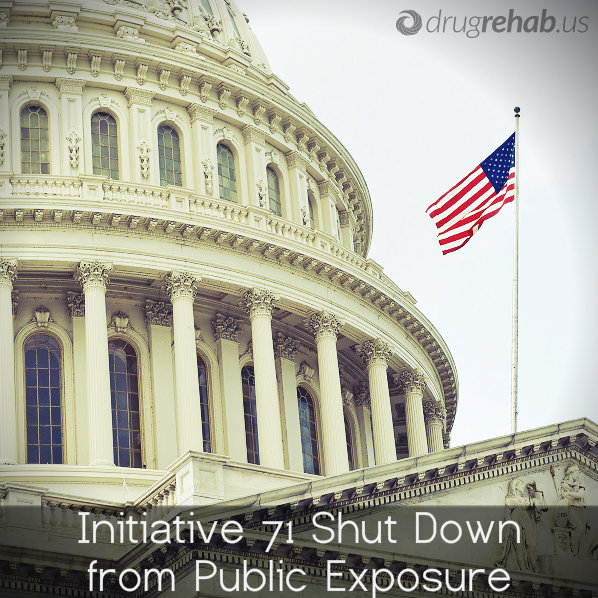 This was to be the subject of a hearing in February. But the council decided to take its discussion behind closed doors, where public exposure would be kept to a minimum.
This was to be the subject of a hearing in February. But the council decided to take its discussion behind closed doors, where public exposure would be kept to a minimum.
While states have the right to pass laws without federal government interference, elected officials in the District of Columbia must submit all such legislation to Congress for final approval. With both the House and Senate under the control of Republicans, who almost universally oppose drug legalization, it has been assumed from the beginning that D.C.’s attempt to change its marijuana laws would be vetoed—and that’s exactly what happened. When Congress passed its annual budget in December, a clause was included that prohibited taxpayer funds—either federal or local—from being used to implement any changes in drug laws.
The D.C. council members were fully aware of these restrictions when they planned this hearing and when their bill to create a manufacture-and-distribution network was first introduced. But they wanted to have a sensible and comprehensive action plan in place in the event that a new Congress with a more progressive attitude were to come into power.
But according to Racine, even discussing the issue could be interpreted as defying the will of the nation’s most powerful legislative body. He told the D.C. council members that their planned public discussion might violate another congressional edict called the Anti-Deficiency Act, which forbids lawmakers and bureaucrats in the district from spending tax funds on actions banned by the federal government. Sharing information and opinions in private meetings would be protected by the First Amendment, Racine declared, but pushing the legalization of marijuana even one step closer to reality would put council members squarely in the line of fire. Racine claimed they might be subject to fines or jail sentences if they went ahead with their original plan.
Racine’s opinion was not shared by D.C. council staff attorney V. David Zvenyach. He saw nothing in existing law that would prevent council members from planning for future contingencies. Given this backdrop, it is not surprising that several members of the council strongly disagreed with the decision to cancel the public hearing. Chalking the whole brouhaha up to unwanted congressional meddling, the members of this group were outraged by what they saw as intolerable interference in the affairs of an independent city.
Initiative 71 And The War On Drugs
Initiative 71 seems doomed to irrelevancy as long as Republicans maintain control of Congress—or as long as the Republican consensus remains hostile to any loosening of existing drug laws.
It is noteworthy, however, that Obama administration drug czar Michael Botticelli recently stated his opinion that Initiative 71 should be allowed to go into effect. This represents a change from the past, when Democrats and Republicans were united in their determination to continue the war on drugs without compromise. Winds of change are in the air, and while the immediate future of Initiative 71 doesn’t seem particularly bright, it is likely only a matter of time before the will of the people carries the day.
Find Out Why No States Should Be Legalizing Recreational Marijuana
07 May 2015
The Truth About Methadone
Methadone maintenance is a treatment strategy for heroin addiction that has been helping people for decades. Methadone, like heroin, is an opioid drug. As such, it can help addicts maintain sobriety from heroin without experiencing the devastating withdrawal symptoms that lead so many back to the drug. Many people misunderstand methadone and believe that it is just another form of drug addiction.
Learn the truth about this effective harm reduction strategy with these methadone myths and facts.
Methadone Myths And Truths
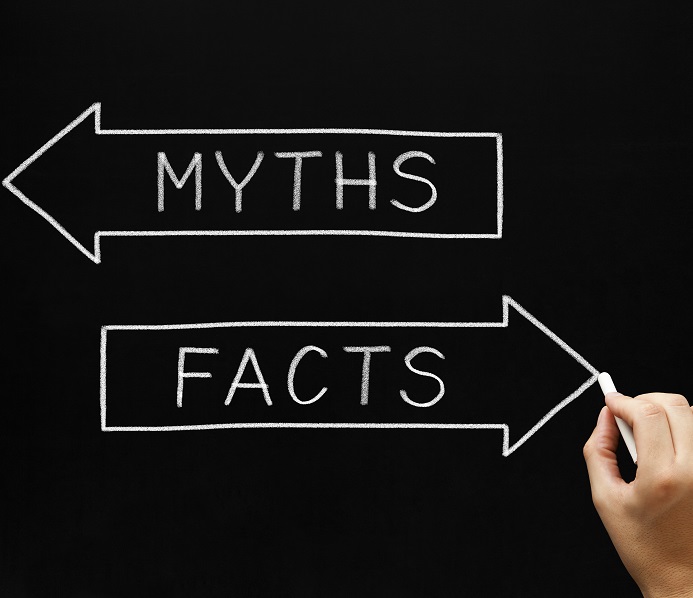 Myth: Methadone is just a substitute for heroin. Although it is also an opioid, methadone is not a substitute drug. It is a valid medical treatment for heroin addiction. What happens in detox from drugs, particularly from heroin, is withdrawal so terrible that few people can experience it without going back to using. For a drug as serious as heroin, withdrawal and cravings last for a long time. Methadone helps mitigate those symptoms so that addicts can resist the urge to go back to heroin.
Myth: Methadone is just a substitute for heroin. Although it is also an opioid, methadone is not a substitute drug. It is a valid medical treatment for heroin addiction. What happens in detox from drugs, particularly from heroin, is withdrawal so terrible that few people can experience it without going back to using. For a drug as serious as heroin, withdrawal and cravings last for a long time. Methadone helps mitigate those symptoms so that addicts can resist the urge to go back to heroin.
Myth: People using methadone are methadone addicts. Methadone maintenance is a medical treatment, and anyone going through this treatment is doing so under the direction of a doctor. Using methadone in this way does not simply mean that a person’s addiction is transferred from heroin to methadone. While it is accurate to say that a person in treatment is physically dependent on methadone, he is not addicted. He is not experiencing negative consequences from the fact that his body needs the methadone. This is the line between dependence and addiction and between methadone maintenance and heroin addiction.
Myth: Methadone makes you gain weight and rots your bones and teeth. Substance use and abuse cause a number of ill health effects, but the idea that methadone maintenance is bad for your health is not completely true. Methadone can cause dry mouth, which can increase the risk for tooth decay. Proper dental care mitigates this risk. An incorrect dosage can cause bone pain, but it does not cause bone decay. Finally, weight gain can occur with methadone maintenance, but only because getting off heroin means a return to a normal appetite.
Myth: Methadone causes sterility. This is absolutely untrue. It can sometimes lower testosterone in men, but this does not cause a man to be sterile. It can also be diagnosed and easily treated when it does occur.
Myth: Methadone cures heroin addiction. It would be nice if this were true, but in reality there is no cure for any type of addiction. Methadone maintenance is a medical treatment for heroin addiction. Success rates for opiate addiction treatments vary based on the individual, but methadone maintenance works well for many addicts. With this kind of medical treatment as well as therapy and support, many people are able to stay sober.
Methadone often gets a bad rap as a drug used to treat a drug addiction, but the truth is that it has been used for decades because it really does help people addicted to heroin.
Check Out Our Other Informative Addiction Medication Blogs
Any drug court that hopes to obtain federal funding will have to allow addicts access to drug replacement therapies for heroin and prescription opioid addiction, the U.S. government has ruled.
Treatment programs that practice abstinence-only therapies will still remain perfectly acceptable in most cases, but when doctors recommend drug maintenance as the best alternative for individual defendants, drug court judges will have to respect that opinion.
Changes In Addiction Rehab Policy
These changes in existing policy were announced in February by Michael Botticelli, director of the White House Office of National Drug Control Policy. Previously it had been left to the discretion of drug court judges to decide which types of rehabilitation and treatment were appropriate, and these institutions have a long history of rejecting drug replacement strategies. In Kentucky, there are signs posted outside drug courts instructing defendants in methadone or Suboxone maintenance programs to wean themselves off of these drugs before their court dates if they want to avoid being sent to prison.
Maintenance Programs More Effective Than Conventional Abstinence-Based Programs?
But the latest evidence strongly suggests drug maintenance programs, particularly those that rely on Suboxone as a replacement drug, are extremely useful and do an excellent job of helping opioid addicts stay away from the substances that endanger their lives. Abstinence-based treatments in general are more effective against alcoholism than against heroin and OxyContin addiction, which cause changes in the brain that can be incredibly difficult to overcome when relying on willpower alone.
 Studies show more than 90 percent of heroin and opioid painkiller addicts will relapse back into drug use within a year of conventional rehabilitation, with the majority dropping out of treatment programs before reaching the end. In some cases, this may show a lack of commitment, but it is still data that treatment centers cannot afford to ignore.
Studies show more than 90 percent of heroin and opioid painkiller addicts will relapse back into drug use within a year of conventional rehabilitation, with the majority dropping out of treatment programs before reaching the end. In some cases, this may show a lack of commitment, but it is still data that treatment centers cannot afford to ignore.
Even outside structured treatment programs, Suboxone is extremely popular with opioid addicts, so much so that a thriving underground market for the drug exists among those looking to self-medicate themselves out of their drug habits. But only 2.5 percent of physicians across the United States have gone through the certification process necessary to prescribe this maintenance medication, helping to repress the availability of the drug.
Most physicians and treatment experts don’t recommend Suboxone or methadone maintenance therapy for opioid addicts, preferring to stick with what they see as the tried-and-true methods of abstinence and the drug-free lifestyle. Substitution drugs go against the grain, maintaining a state of addiction despite their abilities to decrease cravings and reduce the opioid high.
But plenty of studies have verified the relative safety of drug maintenance therapy. At the present time, prescription opioid painkillers plus heroin overdose take the lives of about 25,000 Americans each and every year, and the number of victims has increased exponentially over the last 10 to 15 years. Relapse following unsuccessful treatment is a common killer in these cases, because opioid addicts who go back to using after a period of abstinence have reduced tolerance for drugs and can overdose easily if they take the same dosages they did in the past.
Benefits Of Drug Maintenance Therapies
The reliance of drug courts on abstinence-based rehabilitation is understandable, given the fact that drug maintenance therapy does replace one type of opioid addiction with another. But having one addiction kill the other can play a constructive healing role for desperate individuals who lack the capacity to beat their drug dependencies without extra help.
Willpower is an important part of any addiction recovery regime, and all addicts who plan to get better must make a determined effort to overcome the brain disease that plagues them. Opioid addicts undergo significant neurological changes that won’t go away overnight, however, and that is why drug maintenance can help bridge the gap between dependency and recovery.
Ideally, addicts who use methadone or Suboxone will eventually be able to wean themselves off of these substances under medical supervision. But until they do, these drugs can keep them alive, still in a position to win a battle against addiction that can so easily end in tragedy if intervention is unsuccessful.
Drug courts can provide a route to recovery for addicts only if they remain open to all possibilities, including those that may seem a bit outside the box. The new federal government policy may force their hand to a certain extent, but is will also help raise the consciousness of drug court judges who have a responsibility to keep up with the times.
Read Our Latest News Blogs
Since video gambling in Illinois became legal, the state’s neighborhoods, retail districts and shopping malls have been invaded by a new type of gambling establishment—the video gambling café. Unlike bars and restaurants that provide a few video slot machines for their customers’ convenience or to supplement the main business, video gambling cafés are a stripped down no-frills version of the casino that exist solely to make money off of people’s passion for electronic games of chance.
When politicians in Illinois got the idea to legalize video gambling machines, their primary purpose was to give a boost to neighborhood taverns and local restaurants struggling under the weight of the economic downturn. Of course they were also looking for new revenue streams, and they knew expanded gambling would swell the state’s tax coffers more prodigiously than spring melting floods the Mississippi River.
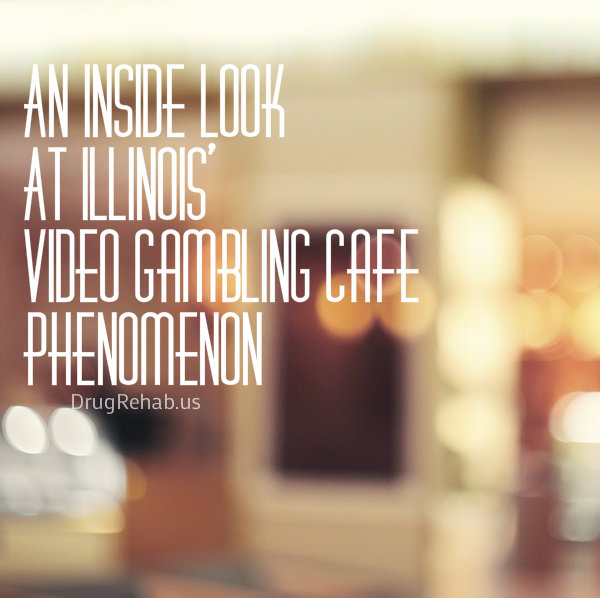 Illinois’ Video Gaming Act of 2009 authorized the placement of up to five video slot machines or gaming terminals in truck stops, veteran facilities, fraternal establishments and retail outlets licensed to serve alcoholic beverages for immediate consumption. It took a while for the new law to be put into application (three years, to be precise), but when video gambling finally came online, a new type of gambling operation barged onto the scene and threw its chips into the pot.
Illinois’ Video Gaming Act of 2009 authorized the placement of up to five video slot machines or gaming terminals in truck stops, veteran facilities, fraternal establishments and retail outlets licensed to serve alcoholic beverages for immediate consumption. It took a while for the new law to be put into application (three years, to be precise), but when video gambling finally came online, a new type of gambling operation barged onto the scene and threw its chips into the pot.
Originating from mysterious locations far outside the Illinois border, these gambling entrepreneurs applied for liquor licenses in Illinois municipalities eager for business expansion. After their requests were granted—as they almost always were—the video gambling café phenomenon truly took off.
Video Gambling Cafés Surging
The numbers are changing every day, but according to one recent report, there are more than 1,250 video gaming machines ensconced in 280 cafés across the Prairie State. And that estimate doesn’t include the applications for café licenses that are pending in the 40-plus Illinois counties that have granted café operators permission to set up shop.
To meet the requirements of the law, video cafés must serve food. But their offerings are sparse in comparison to bars (with strict drink limitations often enforced), and the vast majority of their income is gained from the operation of their video slot machines.
Video Gambling Cafés’ More “Wholesome” Impression
The cafés advertise themselves as a “wholesome” alternative to bars, featuring a pure, unadorned gambling experience appropriate for all men and women of legal age.
To present a benign image, most of the cafes have chosen names like “Dottie’s,” “Penny’s,” “Stella’s,” “Annie’s” or “Emma’s,” perhaps intending to give the impression that café owners are sentimental sweethearts who chose to name their businesses after their moms.
Not as glitzy and glamorous as the typical Las Vegas gambling venue (and not nearly as big), most video gambling cafés have been humbly plopped down in shopping malls or alongside other small locally owned neighborhood businesses.
Simple frontage and unassuming décor complement this modest comportment, helping portray the video gambling café as a quieter, more casual and more affordable option for those repelled by the money-grubbing flashiness of the traditional casino.
Video Gambling Cafés’ Huge State Profits
So far, the understated stylistic choices of the video gambling cafés have proven to be a fabulous success. These establishments are already grossing in excess of $100 million annually, and are responsible for about 7 percent of the state’s legal gambling profits.
Since these businesses are taxed, they are helping to fill depleted government treasuries. But they are stealing customers away from the bars, clubs and restaurants that were the intended target of the original legislation and helping spread gambling farther and faster than was ever anticipated.
Most of the cafés are owned by out-of-state interests that divert profits to far-off locations, infuriating community and political leaders and creating a sense of urgency among those who want to rein in these slick operators.
And while no studies have yet been performed to see what effects their presence might be having on pathological gamblers, having so much temptation so close at hand (most of these cafés are adjacent to or actually in residential neighborhoods) must be undermining the attempts of many to overcome their addictions.
Lake County Reaction
In Lake County, just north of Chicago, new rules have been passed requiring liquor license holders with video slot machines to gross at least 60 percent of their revenue from food and drink sales. Additionally, these businesses may not dedicate more than 10 percent of their floor space to video gambling.
These restrictions will inevitably mean the end for prospective video gambling entrepreneurs looking to set up shop in Lake County, since their cafés could not possibly hope to meet these exacting and clearly discriminatory standards.
It remains to be seen if other Illinois counties will follow the example set by Lake County. But it seems highly probable, especially in areas where public opinion isn’t so keen on endlessly-expanded gambling. But as long as these cafes have a significant customer base, they will likely remain a fixture on the Illinois gambling scene, even if their numbers are restricted in the future.
Is Your Partner A Compulsive Gambler? – Learn The Early Warning Signs Now
It would seem that negatives to recreational drugs would be obvious and overwhelming, but voters in several states have now approved legal, recreational marijuana. Medical marijuana is legal in nearly half of the 50 states, but allowing recreational use of the drug is a completely different matter. Washington, Oregon, Colorado, Alaska and the District of Columbia have made the vote for legal, recreational pot. According to many opponents of the votes, these states have made a big mistake.
Why Voters Approve Legal Marijuana
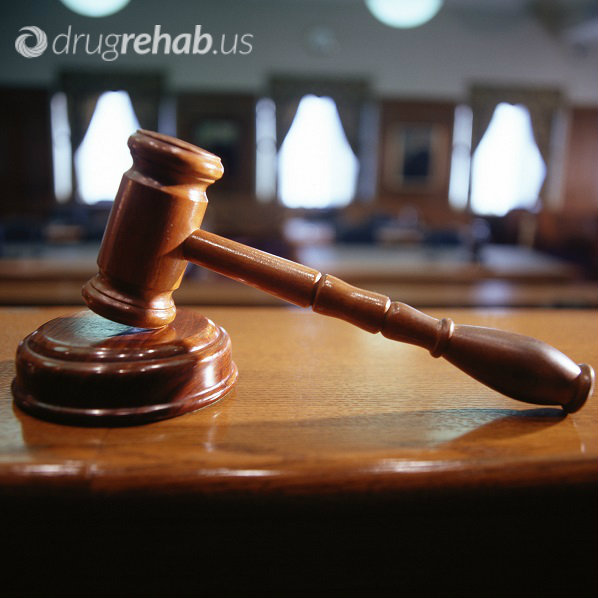 Marijuana remains illegal for recreational use according to the federal government, but states are asserting their rights and putting the legality of the drug to the vote.
Marijuana remains illegal for recreational use according to the federal government, but states are asserting their rights and putting the legality of the drug to the vote.
Those voters who have approved the legalization have a number of reasons for doing so and feel that they outweigh the obvious disadvantages of legalizing marijuana.
Some simply want to be able to use the drug without breaking the law.
Others see it as a good source of revenue for the state.
Many also see it as a way to reduce prison populations.
The Cons Of Recreational Marijuana Legalization
While the upside reasons to legalizing pot can sound pretty convincing, they completely ignore the obvious downsides. The overwhelming reasons to not allow legal marijuana are related to public health and the health of individuals. Marijuana is a mind-altering, addictive drug. Too many people forget this fact and falsely assume that marijuana is not that detrimental to health simply because it isn’t as bad as heroin, meth or cocaine.
Regular marijuana use leads to addiction in about 10 percent of those who partake. There are more people in rehab for marijuana addiction than for any other single drug. Even without addiction, marijuana use is detrimental to health. Smoking pot can cause lung conditions and memory loss. Using pot can also lead to accidents. Driving under the influence of marijuana is dangerous and there is no way yet to accurately determine when someone is too impaired to drive.
Of all the cons of legalizing marijuana, perhaps the most serious is the effect it could have on young people. Teens with developing brains stand to suffer the most from using this drug, and while laws will ban them from using it, everyone knows that legalizing the drug will only increase access for young people.
Currently, alcohol is the most commonly abused substance by teens because it is the easiest substance to get. With legalization, access to pot will only increase. Teens who smoke pot regularly risk causing permanent damage to their brains, including memory impairment and a lower IQ. Teens are also at a greater risk than adults of becoming addicted to marijuana.
Legalization of recreational pot is a reality that we must now face. With four states and D.C. voting for legalization and more states likely to follow suit, the negative consequences are likely to start appearing. If you have a teen in the home, be sure to have a talk about the dangers of using marijuana. Many people, especially teens, fail to recognize the risks taken when using marijuana.
How Many People Use Medical Marijuana? – Find Out The Truth Now!


